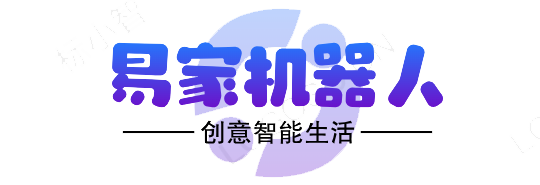如何盘点出掘金的年度高赞文章?
前言
各位掘友,新年好,今天是 2022 年的第一天,掘金的人气作者投票活动如火如荼,榜单已经落幕,当然跟我半毛钱关系都没有,我的新年 Flag ,就是掘金等级到达 V4,而对于绝大多数读者来说,新年 Flag 中是否有“学习”这一项呢,对于我来说,我也是,于是就有萌生一个想法,我想统计出掘金的年度高赞文章。
- 是可以收藏这些高赞文章,然后慢慢学习;
- 是想通过这些文章学习下,哪些文章是适合读者的,这些文章的优点在哪?我们该如何写文章?
统计年度活跃作者
正好我们可以通过“年底投票页面”统计出今年活跃的作者,这个页面是滚动翻页,通过 has_more 来判断是否有下一页,那么我们就可以通过 nodejs 获取到所有作者的 ID。
const axios = require('axios')
const _ = require('lodash')
const fs = require('fs')
const url = 'https://api.juejin.cn/list_api/v1/annual/list'
const headers = {
'content-type': 'application/json; ',
'user-agent':
'Mozilla/5.0 (Macintosh; Intel Mac OS X 10_15_7) AppleWebKit/537.36 (KHTML, like Gecko) Chrome/96.0.4664.110 Safari/537.36',
cookies: 'xxx',
}
let userId = []
const fetchUserId = (cursor = 0) => {
console.log('请求第' + cursor + '页')
axios
.post(
url,
{ annual_id: '2021', list_type: 0, cursor: cursor + '', keyword: '' },
{
headers,
}
)
.then((res) => {
const data = res.data
userId = userId.concat(_.map(data.data, 'user_id'))
if (data.has_more && userId.length < 1000) {
fetchUserId(cursor + 10)
} else {
fs.writeFileSync('./0-1000.json', JSON.stringify(userId))
}
})
}
fetchUserId()
cookies 可以在浏览器中复制,这样就可以统计排名前 1000 的作者, 分次统计是为了防止掘金后台接口限制。通过 3 次运行,结果统计出这次报名的有 2035 名作者进行报名,当然这个数据不一定准确,接下来我们可以根据所有的用户 ID 获取每位作者的文章了。
获取每位作者的文章列表
我们可以根据投票详情页获取每位作者的文章列表。这里不得不吐槽下掘金的这个接口,前端只展示 3 篇文章,后端却给了全部数据。。。 😅
一起来看下每条数据详情:
这里的文章默认是根据热度排列的,但是我们不知道是根据点赞排列,还是收藏排列的,我们不清楚。
还好,我们可以根据读者页面获取每位掘金作者的文章,如下图:
再次吐槽下,user_info 数据重复了 N 次, 这里的接口有点赞数,评论数和收藏数。(弱弱问 digg_count 是什么意思?哪个单词的前缀?)
建表统计
接下来我们要统计数据了,这么大的数据量,我们不可能用 json 存储,我这边选用了 psql, ORM 选用了 prisma,不了解的同学可以看我之前的翻译文章《适用于 Node.js 和 TypeScript 的完整 ORM —— Prisma》
建立 schema
datasource db {
provider = "postgresql"
url = env("DATABASE_URL")
}
generator client {
provider = "prisma-client-js"
}
model Article {
article_id String @id
title String
brief_content String
content String?
cover_image String
user_id String
ctime String
digg_count Int
view_count Int
comment_count Int
collect_count Int
author_id String
author Author @relation(fields: [author_id], references: [id])
category_id String
category Category @relation(fields: [category_id], references: [id])
tags TagsOnArticles[]
}
model Author {
id String @id
name String
avatar_large String
articles Article[]
}
model Category {
id String @id
name String
articles Article[]
}
model Tag {
id String @id
name String
articles TagsOnArticles[]
}
model TagsOnArticles {
article Article @relation(fields: [article_id], references: [article_id])
article_id String
tag Tag @relation(fields: [tag_id], references: [id])
tag_id String
@@id([article_id, tag_id])
}
表关系
- 文章跟用户 —— 多对一
- 文章跟跟分类 —— 多对一
- 文章跟标签 —— 多对多
获取用户的文章列表代码
/**
* 获取用户的文章列表
* @param userId
* @returns
*/
const fetchList = async (userId: string) => {
console.log('开始采集' + userId)
return new Promise((reslove) => {
setTimeout(async () => {
await axios
.post(
'https://api.juejin.cn/content_api/v1/article/query_list?aid=2608&uuid=6899676175061648910',
{
user_id: userId,
sort_type: 1,
cursor: '0',
},
{ headers }
)
.then((res: any) => {
const data = res.data.data
if (data && data.length) {
// 插入数据库
insert(data)
.catch((e) => {
console.error(e)
process.exit(1)
})
.finally(() => {
reslove('')
})
} else {
reslove('')
}
})
}, 2000)
})
}
为了防止提交过于频繁,我这边设置 2 秒延迟。
插入数据库代码
/**
* 插入数据库
* @param data
*/
async function insert(data: any) {
for (const item of data) {
const article_info = _.pick(item.article_info, [
'article_id',
'title',
'brief_content',
'cover_image',
'user_id',
'ctime',
'digg_count',
'view_count',
'comment_count',
'collect_count',
])
const author_user_info = await prisma.author.findUnique({
where: {
id: item.author_user_info.user_id,
},
})
if (!author_user_info) {
await prisma.author.create({
data: {
id: item.author_user_info.user_id,
name: item.author_user_info.user_name,
avatar_large: item.author_user_info.avatar_large,
},
})
}
const category = await prisma.category.findUnique({
where: {
id: item.category.category_id,
},
})
if (!category) {
await prisma.category.create({
data: {
id: item.category.category_id,
name: item.category.category_name,
},
})
}
const article = await prisma.article.findUnique({
where: {
article_id: article_info.article_id,
},
})
const creates_tags = _.map(item.tags, (tag: any) => {
return {
tag: {
connectOrCreate: {
create: {
id: tag.tag_id,
name: tag.tag_name,
},
where: {
id: tag.tag_id,
},
},
},
}
})
if (!article) {
console.log('create---' + article_info.title)
await prisma.article.create({
data: {
...article_info,
author_id: item.article_info.user_id,
category_id: item.category.category_id,
tags: {
create: creates_tags,
},
},
})
}
}
}
执行 fetchList 就可以获取单个用户的文章了,接下来就是遍历所有 userId, 将所有文章列表保存到数据库中。
这里我们不能通过 Promise.all去执行,因为 Promise.all会将所有的 Promise 同步执行,这样后端为了防止过载,就会直接拒绝你的请求。我们需要将每个请求,每隔 2s 依次请求,然后保存到数据库,该使用什么方法呢?(这个一道常规面试题,如何让多个 Promise 依次执行?)看到这里的小伙伴,不妨在评论区留言。
效果
等待全部运行完成,我们就将年度作者的全部文章保存到数据库了。 运行下面命令,通过 prisma studio 查看数据
npx prisma studio
查询创建时间大于 2021-01-01
new Date('2021/01/01').getTime() //1609430400000
根据点赞数降序排列,就得到我们的高赞文章列表了。
小结
根据这些结果我也总结出了几点,也就是如何写出高赞的文章?
读者群体要广
写 ES6 > Vue > React, 就像我之前写的文章《如何测试 React 异步组件?》,阅读量也就可想而知了,会的肯定不需要看你的文章,不会的也没这个需求。
文章一定要容易理解,一定要让读者理解知识点。
就像作者 林三心 说的
用最通俗的话讲最难的知识点是我的座右铭。
最后
小伙伴们,你们是否看懂了我的这篇文章了呢,请给我一个小赞,你的赞是对我最大的支持。
以上就是本文全部内容,希望这篇文章对大家有所帮助,也可以参考我往期的文章或者在评论区交流你的想法和心得,欢迎一起探索前端。
本文首发掘金平台,来源小马博客





